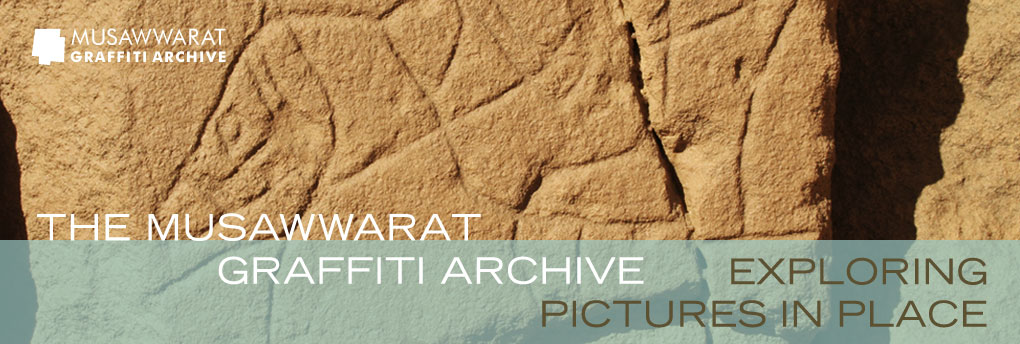Using the Graffiti in Place Database
Access to the ‘Graffiti in Place Database’ is provided through two different entry points: the ‘explore’ and the ‘browse’ functions. The interactive ‘explore’ section presents the graffiti in their exact spatial context by letting the visitor select an area of interest on an overview map of the Great Enclosure and then click on individual walls and through to the block level (i.e. ‘zoom in’ to the block level). We have chosen the individual sandstone block as the smallest unit of spatial reference. This seems justified as graffiti were often made as to adhere to the block outlines, using the individual block as a ‘canvas’.
The location-based presentation of the graffiti at the block level, where data on each block (and its graffiti) is accessible via hot-spots, was preferred to a presentation at the graffiti level. The latter would not have been feasible, as graffiti frequently overlap. Hot-spots marking graffiti would have densely clustered and often covered each other. At the block level data on each block and each graffito entity is displayed. All blocks of a wall are described, including those without graffiti. This is to allow the user to draw conclusions on motivations behind graffiti placement: it provides information on where graffiti were placed and where not, and where they may have been placed but where block surfaces are too badly preserved today to allow any statement on their presence or absence.
The ‘browse’ function lets the user search the database according to ‘location’, ‘date/period’ or ‘motif’ criteria. The ‘location’ function provides graffiti search results at the complex, wall, or block levels, allowing the user to refine search results via drop-down menus. ‘Date/period’ searches bring up those graffiti for which an approximate date has been entered into the database. At the moment this concerns only a fraction of the graffiti, reflecting the state of research. Graffiti are assigned a date/period on the basis of motif content and of comparisons with motifs occurring in better dated archaeological contexts. The ‘motif’ search function enables the user to search for specific graffiti motif categories, motif types and motifs as they are defined in the motif thesaurus that was developed for the description of the Musawwarat graffiti. Searches can be refined via drop-down menus. A ‘combined search’ function is in development.
A number of overview and detail photographs are presented for each block and graffito as ‘explore’ and ‘browse’ results in the ‘Graffiti in Place Database’. Sketches show the individual graffiti that have been identified and described. These sketches were made on the basis of photographs and are meant to help the user identify the individual graffiti on the block surfaces. These are not publication-ready drawings.
Text: Cornelia Kleinitz (2012)






